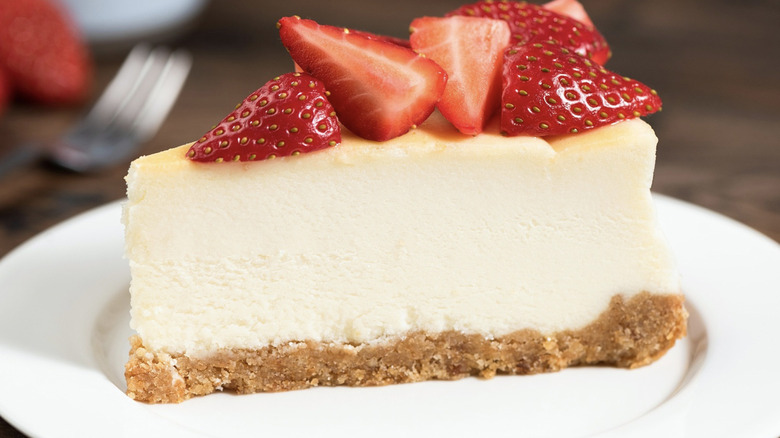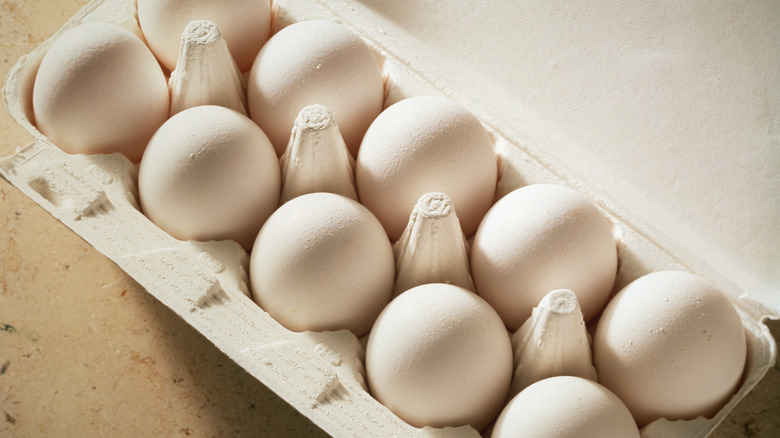How Cold Eggs Can Ruin Your Cheesecake
A cheesecake is decadent and rich, and a homemade version is definitely a labor of love. An entire cheesecake is meant to serve a crowd, making it the perfect dessert to serve after a holiday meal or dinner party. While the classic New York cheesecake keeps it simple with no toppings or sauces, you can find cheesecakes in almost any flavor and with toppings galore. The Cheesecake Factory restaurant serves over 30 different kinds of cheesecakes, including caramel apple cheesecake and mango key lime cheesecake.
There's far more than just one way to make cheesecake. Making one from scratch is a time-consuming endeavor, though no-bake cheesecakes provide a unique option for those pressed for time. A no-bake cheesecake does not contain eggs and sets up in the fridge, as opposed to being cooked in the oven (per Confessions of a Baking Queen). For those who want to speed up the cooking time, making an Instant Pot cheesecake is the way to go. The Instant Pot cooks the custard mixture in just about half an hour. No matter how you make your cheesecake, there are some tried and true rules to stick to if you want your dessert to be a success. One of the easiest things to do to ensure a perfect cheesecake is to prep ahead of time to ensure your ingredients are at the correct temperature — especially if you're using eggs.
Keep all ingredients at room temperature
According to Southern Living, one of the biggest mistakes that you can make while baking cheesecake is using cold eggs. Most recipes call for room-temperature ingredients like butter and cream cheese. While the recipe may assume people know to also use room temperature eggs, it's not often done. The purpose of using room-temperature ingredients is to make sure the eggs blend seamlessly into the other ingredients to create a "velvety smooth" texture. If the eggs are too cold, it may "shock" the other ingredients and cause the mixture to seize up.
Some other mistakes that everyone makes when cooking cheesecake include overcooking the cheesecake and rushing the process. You ideally should leave your ingredients out overnight so they can truly come to room temperature, but this makes it impossible to cook and eat cheesecake on the same day. It's simply not worth it to cut corners only to have your cheesecake come out as a soupy mess. Food Network suggests giving yourself at least 9 hours from start to finish, even though the active cook time is only about an hour and a half. Once the cheesecake is baked, leave it in the fridge overnight to ensure best results.

